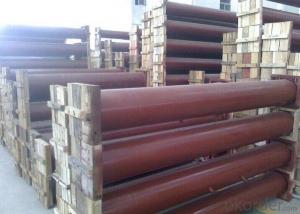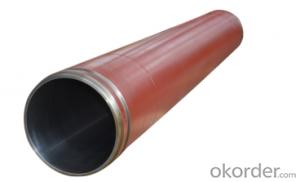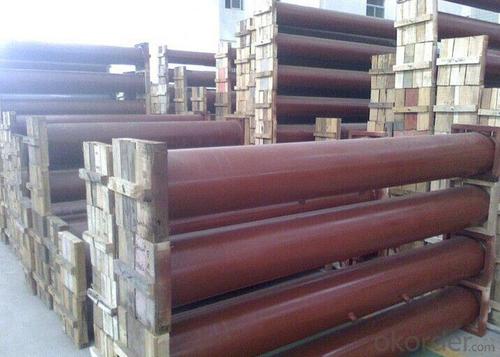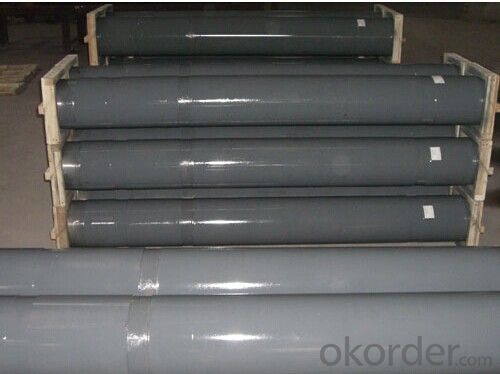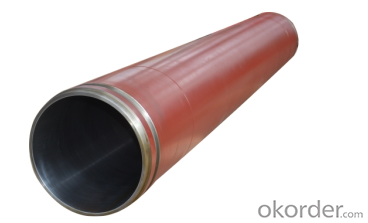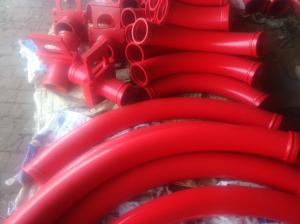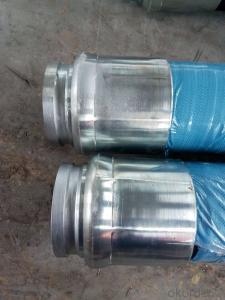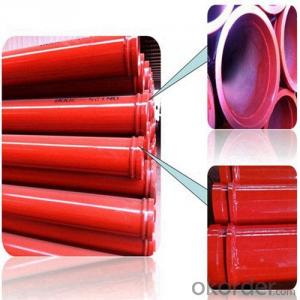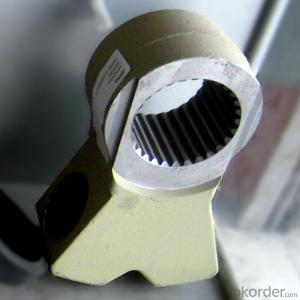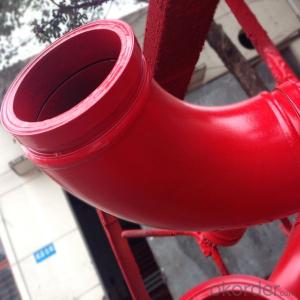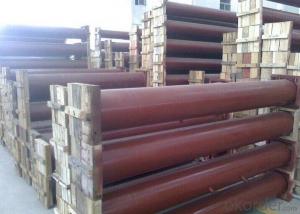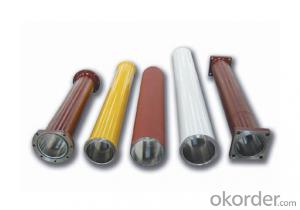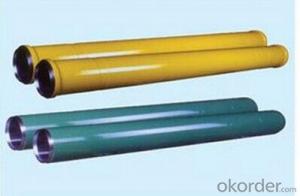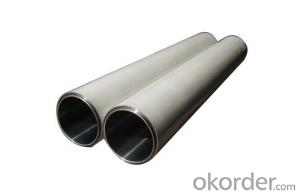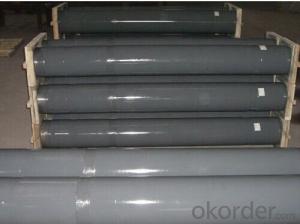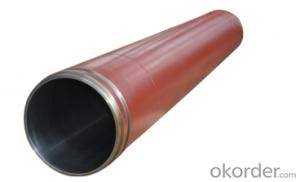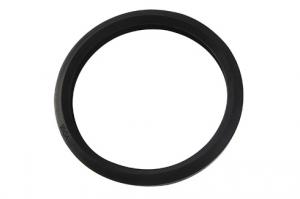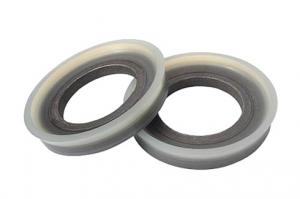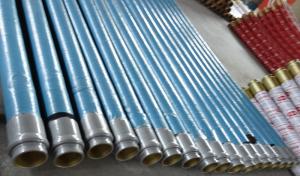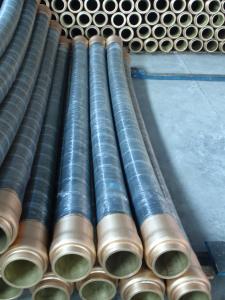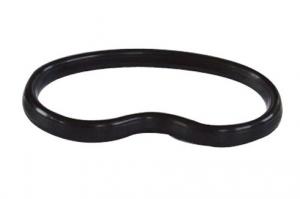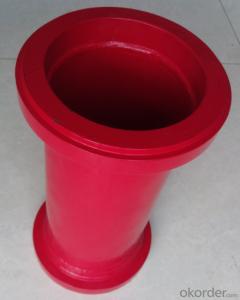PUMPING CYLINDER(PM) I.D.:DN200 CR. THICKNESS :0.25MM-0.3MM LENGTH:2305MM
- Loading Port:
- Shanghai
- Payment Terms:
- TT OR LC
- Min Order Qty:
- 2 pc
- Supply Capability:
- 1000 pc/month
OKorder Service Pledge
OKorder Financial Service
You Might Also Like
Product Description:
The Concrete Pump Delivery Cylinder normally made by steel material No. C45. according to customer’s requests, and also package in bundles or nude packing directly put into container.
Scope of Application of the Cylinders
The Pump Delivery Cylinder is a concrete pumping for combined use with other concrete pumps in concrete pumping operations. It can be widely used in the construction of various types of concrete structures like industrial and civil buildings, bridges, roads, and other types of infrastructure.
This Cylinder can only be used in concrete pump construction operations, but not in any other operations, like dragging, moving, or hoisting heavy articles or personnel. The pipe is also not allowed to be used in any location where any combustible or explosive material exists or a cave-in may occur.
Specifications:
Concrete Pump Delivery Cylinder DN200*2305
1. Capacity: 60,000~80,000cbm
2. Size: DN180, DN200, DN230..
4. Brand: PM, Sany,ZM SCHWING, PM, SANY, KYOKUTO, CIFA
5. Material: C45
6. Quenching and tempering to improve the hardness to HB241-280
7. Inner wall chrome thickness is 0.25-0.30mm, hardness HV820-900.
Product Advantages:
OKorder's Cylinders Channels are durable, strong, and safety.
Main Product Features:
· Premium quality
· Prompt delivery & seaworthy packing (10-20 days)
Reliable performance
Easy to weld
High safety.
· Professional Service
· Competitive pricing
Measuring of wall thickness from the outside
Low purchase cost
FAQ:
Q1: How long about delivery time?
A1: Normally we keep the raw materials for old customers and sometime we also keep stock products to make sure delivery time in any emergency cases.
Q2: How do we guarantee the quality of our Cylinders?
A2: We have established an advanced quality management system which conducts strict quality tests at every step, from raw materials to the final product. At the same time, we provide extensive follow-up service assurances as required.
Q3: How soon can we receive the product after purchase?
A3: Within three days of placing an order, we will book the vessel for goods. The specific shipping date is dependent upon international and government factors, but is typically10 to 30 workdays.
Q4: If we can produce some Cylinders according to customers request?
A4: Yes, we can produce Cylinders according to the difference country situations to make it suitable to the market and customers. We have very professional technical team to make the design.
Q5: How to make a quick resolution for after service?
A5: OKorder and our manufacture both have overseas branches all-around of world, If needed,
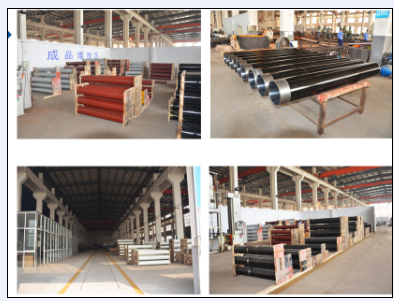
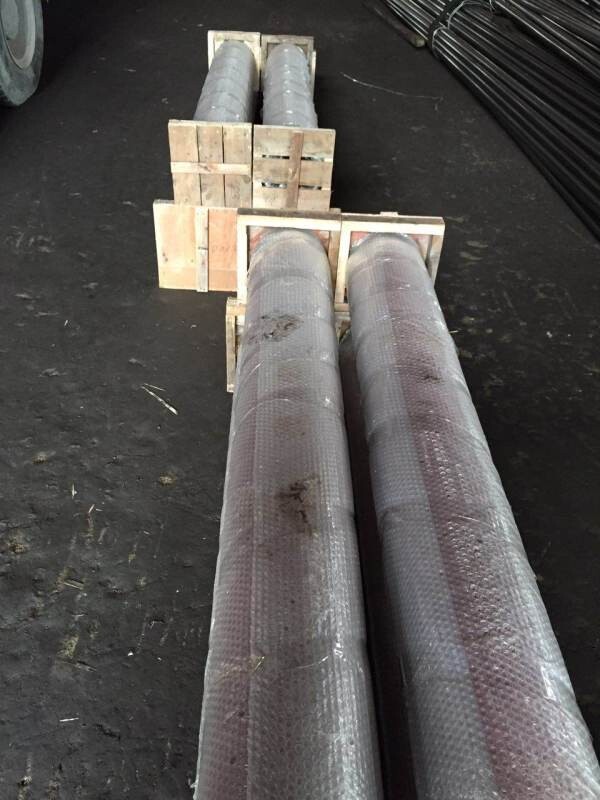
- Q: How can one identify the correct type of rubber seals or gaskets for concrete pump spare parts?
- In order to determine the appropriate rubber seals or gaskets for concrete pump spare parts, there are several steps that can be followed: 1. Refer to the manufacturer's documentation: Review the concrete pump's manual or any accompanying documentation provided by the manufacturer. This information typically includes details about the required type and size of rubber seals or gaskets for different components of the pump. 2. Take accurate measurements: Precisely measure the dimensions of the seals or gaskets that need to be replaced. This includes determining the inner diameter, outer diameter, and thickness. These measurements will assist in finding the correct size of seals or gaskets. 3. Consider material compatibility: Take into account the compatibility of the rubber seals or gaskets with the concrete being pumped. Certain types of rubber can be degraded by chemicals or additives present in the concrete. It is important to select seals or gaskets made of a material that is resistant to the specific chemicals found in the concrete. 4. Seek advice from experts: If uncertain about the specific type of rubber seal or gasket required for the concrete pump, it is recommended to seek guidance from experts. Contact the manufacturer directly or consult a reputable supplier or distributor specializing in concrete pump spare parts. They can provide expert advice and recommend the appropriate seals or gaskets based on the specific model and requirements of the pump. Remember to prioritize the use of the correct type of rubber seals or gaskets to maintain the efficiency and safety of the concrete pump. Taking the time to identify the right parts will ensure optimal performance and reduce the risk of premature wear or failure.
- Q: Are there any specific guidelines for the installation of wear plates or wear rings in concrete pump spare parts?
- Yes, there are specific guidelines for the installation of wear plates or wear rings in concrete pump spare parts. These guidelines typically include ensuring proper alignment and fit, using the correct torque specifications for fasteners, and applying appropriate lubrication. It is important to follow these guidelines to ensure optimal performance and longevity of the wear parts.
- Q: What are the most commonly replaced spare parts for concrete pumps?
- The most commonly replaced spare parts for concrete pumps are typically wear parts such as concrete delivery pipes, rubber hoses, and wear plates. Other commonly replaced parts include seals, gaskets, pistons, and hydraulic components.
- Q: How can you determine when a concrete pump hose needs to be replaced?
- Determining when to replace a concrete pump hose can be done using various indicators: 1. Conduct regular visual inspections to identify any signs of wear and tear. Look closely for surface cracks, cuts, abrasions, or bulges. Significant damage indicates the need for hose replacement. 2. Check for leaks in the hose. The presence of fluid leakage suggests deterioration or damage. Even small leaks should not be disregarded as they can compromise the efficiency and safety of concrete pumping. 3. Monitor changes in the pump's performance. A decrease in pumping pressure or flow rate may indicate a worn-out hose. Stretching or internal wear can reduce effectiveness. 4. Take into account the age and usage frequency of the hose. Over time, exposure to chemicals, weather conditions, and constant pressure can cause deterioration. Older or extensively used hoses may be nearing the end of their lifespan. 5. Refer to the manufacturer's recommendations for the lifespan or replacement intervals of the concrete pump hose. Manufacturers often provide specific guidelines based on materials and construction. Ultimately, prioritizing safety and reliability is crucial when deciding whether to replace a concrete pump hose. If there are any doubts about the hose's integrity, it is best to err on the side of caution and replace it to prevent potential accidents or disruptions in the concrete pumping process.
- Q: What are the indications of a faulty concrete pump seal?
- There are various signs that may suggest a defective seal in a concrete pump. Some commonly observed indications are: 1. Leakage: A clear sign of a faulty seal is the presence of leaks in the seal area. If you notice any leaks, it indicates that the seal is not functioning properly and should be replaced. 2. Decreased pumping efficiency: A defective seal can result in reduced pumping efficiency. If you observe that the concrete pump is unable to deliver the same quantity of concrete as before, or if the job takes longer to complete, it could be due to a faulty seal. 3. Heightened noise levels: Another indication of a faulty seal is an increase in noise levels during operation. If you notice any unusual or louder noises emanating from the concrete pump, it may be an indication that the seal is not sealing properly and requires inspection. 4. Vibrations or movement: Faulty seals can also cause excessive vibrations or movement in the pump. If you notice that the pump is vibrating more than usual or if it moves around during operation, it could signify a problem with the seal. 5. Contamination: A defective seal can allow contaminants like dirt, dust, or water to enter the pump. If you observe any signs of contamination in the pump, it is important to inspect the seal and replace it if needed. Promptly addressing any indications of a defective concrete pump seal is crucial to prevent further damage to the pump and ensure safe and efficient operation. Regular maintenance and inspection of the seal can help in avoiding potential issues and prolonging the lifespan of the concrete pump.
- Q: How often should hydraulic accumulator bladders be inspected or replaced in a concrete pump?
- Hydraulic accumulator bladders in a concrete pump should be inspected regularly, ideally every 6-12 months, to ensure they are in good condition and functioning properly. However, the frequency of replacement depends on various factors such as the pump's usage, operating conditions, and manufacturer's recommendations. It is best to consult the concrete pump's manual or reach out to the manufacturer for specific guidance on when to replace the bladders.
- Q: How often should hydraulic filters be replaced in a concrete pump?
- Hydraulic filters in a concrete pump should be replaced on a regular basis to ensure optimal performance and longevity of the equipment. The exact frequency of replacement will depend on various factors such as the specific model of the concrete pump, the operating conditions, and the quality of hydraulic fluid used. As a general guideline, it is recommended to replace hydraulic filters in a concrete pump every 500 to 1,000 operating hours or at least once a year, whichever comes first. However, it is essential to refer to the manufacturer's recommendations and guidelines for the specific model of the concrete pump, as they may have specific maintenance schedules and intervals. Regular inspection of the hydraulic filters is also crucial to determine if replacement is necessary sooner than the recommended interval. If the filters are clogged, damaged, or show signs of excessive wear, they should be replaced immediately to prevent any potential damage to the hydraulic system. Additionally, if the concrete pump is operating in harsh or dusty environments, the filters may need to be replaced more frequently to ensure proper filtration and prevent contamination. Overall, proper and timely replacement of hydraulic filters in a concrete pump is essential to maintain the efficiency and reliability of the equipment, prevent potential breakdowns, and extend its service life.
- Q: Can I get spare parts for both concrete pumps with and without lubrication systems?
- Yes, spare parts are available for both concrete pumps with and without lubrication systems.
- Q: Can I use alternative materials for concrete pump spare parts?
- Yes, alternative materials can be used for concrete pump spare parts. However, it is important to ensure that these materials meet the required specifications and standards for durability, strength, and compatibility with the concrete pumping system. Additionally, it is advisable to consult with professionals or manufacturers to ensure the safe and efficient functioning of the equipment.
- Q: Are there any warranties or guarantees on concrete pump spare parts?
- Yes, there are warranties and guarantees offered on concrete pump spare parts. Many manufacturers and suppliers provide warranties on their products to ensure the quality and performance of the spare parts. These warranties may vary in duration and coverage depending on the specific supplier or manufacturer. It is important to check with the supplier or manufacturer to understand the terms and conditions of the warranty or guarantee before purchasing the concrete pump spare parts. Additionally, some suppliers may also offer extended warranties or guarantees for an additional cost, providing further peace of mind to the customers.
Send your message to us
PUMPING CYLINDER(PM) I.D.:DN200 CR. THICKNESS :0.25MM-0.3MM LENGTH:2305MM
- Loading Port:
- Shanghai
- Payment Terms:
- TT OR LC
- Min Order Qty:
- 2 pc
- Supply Capability:
- 1000 pc/month
OKorder Service Pledge
OKorder Financial Service
Similar products
Hot products
Hot Searches
Related keywords
